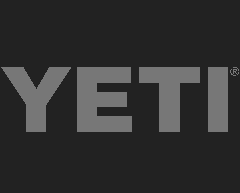These changes are a turning point for the management of oyster resources in Texas. The CoL program will now have the opportunity to create a more vast economic and environmental impact.
By CCA Texas Advocacy Director Shane Bonnot
Healthy Texas coastal ecosystems are vital to coastal communities, providing not only critical habitat and ecological benefits recognized by conservationists, but also supporting the thriving recreational fisheries enjoyed by anglers throughout the state. A program playing a significant role in bolstering oyster populations and enhancing bay health is the Certificate of Location (CoL) program. Recent amendments to the program by the Texas Parks and Wildlife Commission (TPWC) and rule implementation by Texas Parks and Wildlife Department (TPWD) promise to further benefit Texas waters.
What is the Certificate of Location Program?
The CoL program, dually managed by TPWD and the Texas General Land Office (GLO), leases areas in Texas coastal waters for private on-bottom oyster harvesting. Previously, this program focused solely on commercial harvest and was strictly limited to approximately 43 areas under location (2,318 acres total) in Galveston Bay. However, with advances in the 88th legislative session (Senate Bill 1032) and recent rule revisions approved by the TPWC, the CoL program can now be expanded for commercial interests and leveraged for much-needed oyster reef restoration projects.
What Makes The CoL Program So Important?
These changes are a turning point for the management of oyster resources in Texas. The CoL program will now have the opportunity to create a more vast economic and environmental impact.
Now, organizations such as non-profits, research institutions, and NGOs can lease degraded areas (up to 100 acres/site) to carry out oyster restoration activities, following active use criteria set by TPWD. During the lease term, these areas will be closed to commercial oyster harvesting. Commercial CoLs follow similar criteria as restoration CoLs but grant the leaseholder exclusive rights to harvest oysters within their leased area. This change creates a dual benefit: dedicated restoration efforts and more sustainable commercial practices.
Setting a New Standard for Oyster Management
Within the oyster community, there is a deep understanding that CoLs are managed meticulously to promote sustainable harvesting. This includes the strategic placement of cultch to provide vertical relief on the reef, which supports the recruitment of oyster larvae for future harvests. This deliberate approach contrasts sharply with the sometimes-chaotic conditions on public oyster reefs.
Combined with the successful and robust oyster license buyback program, which was strongly supported by CCA Texas with a $1M donation, the expansion of CoLs will reduce the oyster fishery’s dependence on public reefs. This approach protects oyster reef complexes, emphasizing their ecological and structural importance in coastal ecosystems. Additionally, the expansion of CoLs is a necessity for oyster reef conservation, offering a viable offramp for commercial oyster fishermen reliant on the public reef oyster fishery. It’s a win-win for Texas marine resources, anglers, and coastal communities.
The more oyster restoration efforts can be supported, the better. With 15-year lease terms and the right to renew, CoLs enhance opportunities and encourage investment in restoration, ultimately benefiting coastal fisheries and angling opportunities.
According to Rocky Chase, Chairman of the CCA Texas Government Affairs Committee, the push for restoration Certificates of Location has been a long-standing effort, achieved with the support of State Senator Lois Kolkhorst and State Representative Todd Hunter.
Looking Ahead
Future investments in CoLs for oyster restoration and commercial interests will leverage the immense benefits oysters provide to water quality, biodiversity, shoreline protection, and carbon sequestration. Collaboration with stakeholders is crucial to ensure the long-term success of restoration efforts.
CCA Texas has pledged $5 million specifically for oyster reef restoration and intends to utilize a significant portion of these funds under the CoLs umbrella when possible. To start, CCA Texas is working with partners such as the Matagorda Bay Foundation and Gulf Trust to identify potential locations and begin the permit application process.
The ability to now have restoration CoLs is a victory for conservation, anglers, and the future of Texas bays. Thanks in part to TPWD and GLO staff for their thoughtfulness in developing these regulations, CCA Texas is excited to witness the restoration of favorite historic reefs through the CoL program. Implementation of the CoL program puts Texas one step further in ensuring coastal ecosystems remain robust for generations to come.





